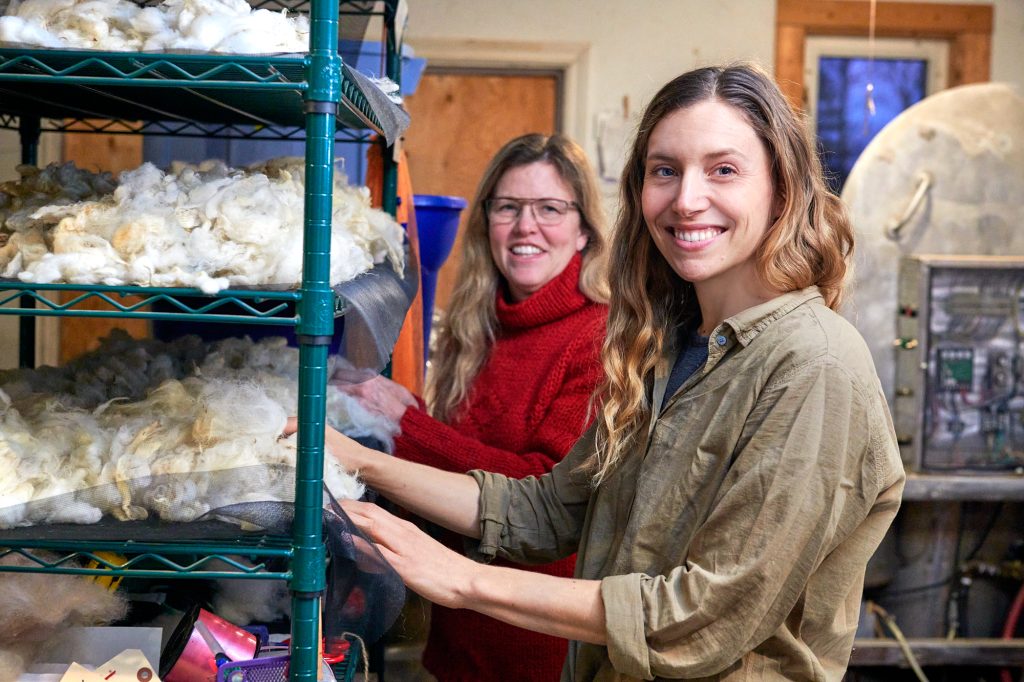Meet our Researchers
Jennifer Green

Jennifer Green is an Assistant Professor in the Textiles and Fashion Department at NSCAD University. Jennifer is a textile designer who has designed fabrics for artisanal and industrial production across the fields of fashion, accessories, vehicle design and interiors. Upon completing her Master of Fine Art at the Royal College of Art in London, Jennifer worked as a denim designer in Belgium. Since returning to NSCAD in 2016, Jennifer’s primary area of research is in bast fibres spinning and weaving.
Jennifer is investigating sustainable plant fibres in Eastern Canada and is helping to develop a sustainable fibre industry in Nova Scotia. In 2010, Jennifer began an artist residency program in Lunenburg, Nova Scotia. During that time, Jennifer found hackles, flax breaks, and spinning wheels in local barns in Lunenburg. Although Jennifer was keen to learn more about local fibre production in the area, flax cultivation and spinning are a lost practice in Nova Scotia. Jennifer spent a month in the Nova Scotia Archives researching the history of fibre production in Nova Scotia. Examining Canadian census records from 1700 to 1900, Jennifer studied the history of traditional textiles, including flax cultivation, processing, spinning, and weaving in Nova Scotia. Sadly, the lost art of flax spinning and linen weaving was due to the Industrial Revolution when traditional textiles and hands-on skills were substituted for less expensive, machine-made fabrics. Today’s fashion garments are mass produced and made with materials such as cotton and polyester, which have large environmental footprints.
In addition to the negative impacts of unsustainable fabrics, Jennifer says there is a lost connection between the present-day consumer and their clothing. People often look at the labels on their clothing and lack an understanding of the production process or the fiber properties. Consequently, consumers lack an appreciation for their clothing items and how they are produced. Jennifer wants to help consumers trace the materials of their clothing to their origin.
Jennifer has worked with TapRoot Farms in Port Williams, Nova Scotia for over a decade. Working closely with Patricia Bishop, co-owner of TapRoot Farms, Jennifer and TapRoot Farms are working to establish a local linen industry in Nova Scotia. The goal is to cultivate flax to turn it into locally produced clothing. The main challenge of this work is infrastructure which can be expensive but needed to process the flax.
Jennifer’s work aims to build an economy where farmers and their products can flourish. Funded by the Change Lab Action Research Initiative (CLARI), Jennifer worked with local farms to create education campaigns with photos of farmers and their products. The farmers were able to keep the photos for future promotional opportunities. Jennifer says informing the consumer through educational marketing is important part in creating a sustainable and local fibre industry in Nova Scotia.
As an Assistant Professor in the Textiles and Fashion Department at NSCAD University, Jennifer is training a new cohort of designers who have a passion for sustainable materials. Jennifer says her students come to NSCAD with an awareness of the detrimental impacts of unsustainable fashion on the planet, and students are motivated to find solutions to complex problems. In Summer 2021, Jennifer taught a class titled, “Woolgathering: Revitalizing a Local and Sustainable Wool Industry”. Students conducted research to support the development of a sustainable wool industry in the Atlantic region. There are over 30 sheep breeds in the Atlantic region, and each sheep has a different type of wool which create different products. Students had the opportunity to visit sheep farms in Atlantic Canada and explore ways to increase the value of wool.
